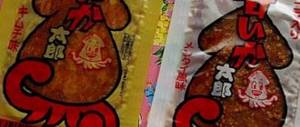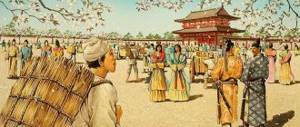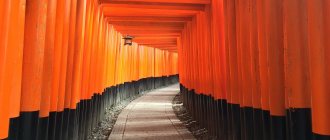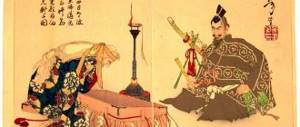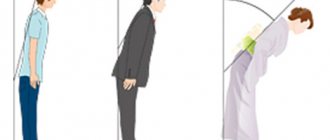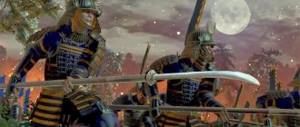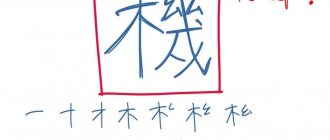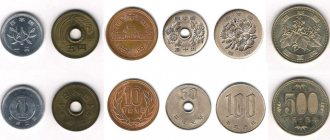Japanese advertising is one of the craziest phenomena of modern mass culture. This game has long ago emerged from the marketing niche and turned into a separate phenomenon. They say that Japanese advertising in some countries is now used even in punitive psychiatry, but this is not certain. Although, if this were true, no one would be surprised - these videos are so crazy that they can both cause schizophrenia and cure it.
However, within this phenomenon there is another one. Like a nesting doll, hidden in the depths of Japanese advertising is a separate type of advertising - advertising with Hollywood celebrities. We have collected the craziest of these videos for you. For what? For no good reason, of course.
John Travolta and Tokyo Drink
John Travolta has seen everything in life. He played an ecstatic alien with dreadlocks in the film "Battlefield: Earth", was accused of harassing massage therapists and even became a Scientologist. But the strangest of his actions is the Tokyo Drink commercial, in which he dashingly dances around with girls with a drink in his hand.
In general, he dances quite well, but Travolta’s face shows how awkward he is. This is especially noticeable in the video, where for some reason he is dressed in a police uniform, and pomaded ladies with guitars are crawling out of televisions around him.
Advertising of exactly that
Soda advertising from the Suntory company offers a recipe for simple alcoholic cocktails: soda-shka, lemon-pushyun, push-push-push, she!
An advertisement for tea for people suffering from high blood pressure from the same Suntory campaign demonstrates an absurd situation in which this ailment can be useful:
In 2006, a commercial for Kincho cockroach spray was released on Japanese TV channels.
This is a one-minute musical spot starring a Korean pop star who is very popular in Japan. The singer, who, according to music sites, gave the old Korean pansori singing a new sound, is called Epaksa, translated into Russian something like Doctor E. Epaksa sings about how Kincho spray saves from an invasion of cockroaches, demonstrating its effect on plastic representatives of this type. And as incredible as it may sound to us, Epaksa has really been a star in many Asian countries for 20 years, especially in Japan:
Lotte Fit's series of incendiary spots is a test of attentiveness. Did you notice where the girl in the orange dress and dog skin came from?
In addition, Japanese advertisers love to invite Western celebrities to appear in their advertisements. In particular, on YouTube there is a 10-minute selection of videos with the current governor of California, and in the past the savior of the Earth and our future.
And a few more examples:
Advertisement for cookies with milk filling from Kabaya
Advertising for Pretz snacks from Ezaki Glico
Advertising Halls
Jean-Claude Van Damme and bubble gum
There was a time when Jean-Claude Van Damme was cool. He performed powerful spins and danced fieryly - that’s why we loved this charming Belgian with excellent stretching. But at some point his career began to decline, and Van Damme went to Japan to get money. And this is what came out of it:
Yes, bullying a childhood idol is a bit hard to take, but all this also has its advantages. Having learned from past mistakes, Van Damme starred in one of the coolest advertisements that Volvo recently shot - in it, Jean-Claude does a stretch on two rushing trucks. However, Japanese chewing gum advertisements probably still haunt his dreams.
[edit] Gaijin reaction
| ◄ ► |
Actually a Parody, but it also delivers White Hands A sausage with a human face Japanese advertising, Russian remix
The average Russian who stumbles upon a Japanese advertisement at first experiences bewilderment and gasp, uttering the phrases “What the hell?” and “What idiot created this?” But after watching a couple more commercials, it starts to deliver, after which theories are put forward about the substances used by the authors, the creators themselves, as well as general impressions. Examples:
| aaaaaaaa!:D I was hooked for at least a week!) |
| Why, oh why don’t our people make such advertisements? |
Yeah, cool cool, mind blowing  |
| In Japan, turning on the TV is dangerous! |
| And... Here... Tea..? Or is it really creeping him out? |
| The video talks about natural products, for example, for making sushi. The actors reveal the essence of unnaturalness, in this case, a woman’s excessive makeup. This is the reason why we don’t make such advertising, you won’t understand it and you’ll just sweat once again. |
| Search for deeper meaning |
Some even become so imbued with the subject that they begin to feed their drug addiction with whatever they are supposed to. The Zhovtno-Blakit brother was especially successful in this, and rightfully ranks first in the number of stubbornly delivering advertisements among the post-Soviet countries. In particular, Hochland’s TV viewers remembered the Mojo soda advertisement shown in 2012, which was very reminiscent of the subject, primarily because of the Japanese women who starred in it, and the too vague atmosphere. Therefore, it was considered by some to be racially Japanese. Around the same years, there was an advertisement for the notorious Nuts candies, which featured a creature similar to a person, but with two squirrels instead of palms. Delivered.
Tommy Lee Jones and the energy drinks
If we talk about pain and bullying, then a series of commercials with Tommy Lee Jones is simply a standard:
Jones is not a funny person at all. He is a serious and rather gloomy man, which has been confirmed more than once by his fellow actors. However, it was as if the Japanese had specially written the most ridiculous script for Jones, as if they expected him to break down in the middle of filming and hit someone.
The level of awkwardness in this video can only be compared to the film Batman Forever, in which Jones played Two-Face. But to surpass this, you still had to try.
Advertising is averagely crazy
Dentsu Tokyo agency and Thai director Saton Petchuwan shot a hilarious video about balance in the body for the Dakara drink. The “Balance” video advertises Suntory’s Dakara drink and talks about the wonders of mastering the vestibular apparatus.
New spots from Japanese food manufacturer Lotte advertise two chewing gum brands, Lotte Acuo and Lotte Fit's. The first, a kind of Ax-effect in Japanese, demonstrates how chewing gum not only freshens breath, but also turns the girls around the guy into anime characters.
The Japanese online hotel and ticket booking service Jalan.net uses a cat in its advertising. Nyalan the cat (“nya” is Japanese for “meow”) has long been the face of Jalan.net and the main character in all its commercials. In a series of spots, of which a decent number have already been released, the cat’s adventures in hotels and travel are shown. He lives on an equal footing with ordinary people and experiences all the delights of hotel service.
Japanese agency Build Creativehaus shot an advertisement about the benefits of Kohara GearIndustry Co. gears. One of the main disadvantages and an indicator of poor quality gears is their squeaking during operation. It was the creaking and grinding of metal gears that formed the basis of the “Creaky/Creaks” advertising campaign. According to Japanese creatives, this sound is very similar to the voices of people swearing.
The video for the promotion of the Esthe WAM Beauty Spa hair removal studio shows an incredible story with a girl whose smooth armpits reflected the sun with a laser beam. Hair removal in Asia is advertised using a situation unthinkable for the European mentality - the sun from the armpits is reflected by a laser beam and “fries” those around. The atmosphere of the video, the acting of the supporting actors and the details of the setting are no less comical.
And one more video for Esthe Wam to cement the impressions.
Arnold Schwarzenegger and stuff
Generalissimo of crazy advertising. Governor of game and generator of traveling images. All this is Arnold Schwarzenegger, who starred in a whole bunch of ridiculous commercials that can tie the brains of even the toughest viewer into knots:
Schwarzenegger advertised noodles, energy drinks and who knows what else. The Austrian bodybuilder's popularity in Japan is widespread, and he still appears periodically in various advertisements. It is impossible to calculate how much money Arnie received from advertising contracts - but the account there is clearly millions and millions of dollars.
[edit] How do the Japanese view this?
Any Anonymous who is interested in Japanese topics knows that the Japanese are an expert in perversions. In part, this is due to the fact that the Japanese are incredibly busy with work. Working long hours a day, overwork and the general dullness of Nihon's metropolises often drive Japanese clerks crazy, and they look for any way to relax. Beer, hentai, paid dates with loli after work often break the concept of normalcy in the Japanese brain, which has been endured many times, as a result of which even the most stubborn and drug-addicted advertising will seem boring and dull to the average Japanese.
Twin Peaks and Georgia Coffee
As this advertisement makes clear, good coffee in the town of Twin Peaks is not only served at the Double R cafe:
Oddly enough, of the entire list of advertisements, this is the most sane, although its plot develops in the universe of one of the most surreal series in history. But it's still kind of sad to watch Agent Cooper and the other Twin Peaks characters turn into commercial puppets of a Japanese corporation that produces crappy canned coffee. Although it is quite possible that this advertisement is not at all what it seems.
Over time, filming in Japanese advertising ceased to be something shameful for stars. Today, celebrities, on the contrary, are trying to appear in something like that, because the video that is shown will probably go viral on the Internet, adding a couple more points to media exposure.
And although time passes, and it would seem that postmodernism has already erased all the boundaries of idiocy, vintage Japanese advertising still remains that piece of lamp-based, concentrated game, the long viewing of which can cause seizures. Truly a true standard of madness.
Japanese advertising is so different and so... beautiful
If you are a regular on social networks, then it is unlikely that a “virus” in the form of some Japanese advertisement has not flashed in your feed at least once a year. Moreover, in 95% of cases, this viral video was categorized as “funny, how stubborn the Japanese are,” or “the japs are okay.” Social networks outside of East Asia usually, if they catch and share Japanese videos, then they mainly choose such content. Which results in netizens not having a completely correct understanding of advertising products from this country. Meanwhile, Japanese advertising is a very diverse phenomenon, about which you can talk a lot and even more, talk about it.
Sell in 15 seconds
There is such a feature of advertising videos from Japan that television commercials there are shot with a running time of 15 seconds. This tradition, as it appeared in the distant 1960s, has stuck in this country to this day. In the 2010s, many exceptions to this rule appeared, but in general it still remains relevant. A big breakthrough from the 15-second limit was given by social networks, for which they began to create videos lasting up to 3-4 minutes. However, the common features inherent in television advertising over several decades continued to appear in new videos, even the most “epic” ones.
A long video included in the list of the most striking advertising videos in Japan in 2021
By adopting the format of the shortest possible video, Japanese TV presented advertisers with a choice - what could be conveyed to the viewer in 15 seconds. So much has been written about this time limitation over the past 2-3 decades that it’s a little boring; In some studies, a number of features of Japanese television advertising are derived from this. Sometimes this 15-second format is considered the source of all the originality of Japanese video, which is of course not entirely correct, because there are other countries, such as France, where this timing was also adopted. Given the coincidence of the initial technical conditions in different countries, there was no common specificity for creating an advertising video. Of course, there are similarities between French and Japanese commercials, for example, from the 1990s, but there is no trace of any coincidence in the general lines of development of television advertising.
Creative videographers and scriptwriters in Japan have taken the path of winning the hearts of the viewer, abandoning the struggle to inform them about the features of the product. One can argue for a long time about how effective this is (and the debate has been raging for two decades, and Japanese advertising has been the subject of substantial scientific research), but the fact is clear - the Japanese are reaching out to consumers through an image, not information, especially not through comparing products. In Japan, for a very long time, advertising that showed the advantages of one product or service over another was prohibited; and even after most of the bans were lifted, the tendency to avoid this approach remained.
Sell beautifully and with humor
A Japanese commercial most often tries to create an atmosphere around the product (or service) being promoted. Even if the product is a plastic card, this is not a list of its advantages over cash, which the Japanese love, but a girl with a light handbag flitting about while shopping. Inside the image and plot, the idea of convenience is still conveyed, but this is almost not conveyed in the text, just as the display of this convenience is expressed in extremely thin strokes. A huge mass of videos advertising drinks, food and cosmetics contain almost no such veiled information. In 15 seconds you are offered only images of the consumer and the product, and they try to present this fusion of two principles beautifully.
If the center of the video is not beauty, then it is specific Japanese (East Asian) humor. Often a celebrity also comes to the aid of the advertiser. In “epic” videos lasting up to 4 minutes, the Japanese try to take things by storm, impress with their scale, using dozens and hundreds of people in the frame.
It is not so rare that a plot develops almost independently of the advertised product, and in this case quite subtle irony, humor, and... again, it is desirable to have something beautiful in the frame. No, in Japan, of course, there are enough videos on the contrary with such ugly and repulsive images that at first you don’t believe that this is an advertisement (and these are the very cases that netizens outside East Asia like to repost). In general, Japanese advertising video still strives not to show a benefit or advantage, but to evoke pleasant feelings in the viewer towards the product and brand.
Guess what we're advertising
On the way to the heart of the consumer, Japanese videographers can offer the viewer a video that is quite interesting to follow, and ultimately has difficulty understanding what is actually being advertised. It’s good if you really understand it at all, because sometimes it’s not easy to solve an advertising puzzle. And here we won’t rush to give low scores to the scriptwriters, because often these are the videos that get hype on social networks.
So, a little over a year ago, Facebook furiously reposted a video featuring popular idols from the group Nogizaka46. Many reposts came with the caption “I don’t know what they’re selling, but I’m ready to buy it.” Note that the virus spread far beyond the Japanese segment of this social network. From Buryatia in the Siberian taiga to Latin America, netizens liked and commented, offering theories about the advertised product. In Japan itself, the viewer undoubtedly understood the message of the video, and Nogizaka46 fans also perceived it almost as another comeback of their favorite idol.
When Japanese screenwriters indulge the viewer's curiosity, they do not give clues in the middle of the video, but give the solution at the very end of a long video.
Guess what they are advertising here by pressing pause 5 seconds before the end of the video? You can turn on English subs))
Choose with your heart
Until recently, Japanese commercials rarely won international professional competitions, while television commercials are still not frequent guests in prize places. Only the era of the Internet and social networks brought Japanese advertising video to the forefront. Many Facebook users probably remember a series of videos filmed for a Japanese instant noodle manufacturer. Almost every video in the series has gone viral, reaching many countries outside of East Asia. Which was the goal of the creators.
Having burst into the operational spaces of the Internet, advertisers in the Land of the Rising Sun began to master some atypical approaches for them, nevertheless maintaining the established general features of the national advertising video. The main one of these features remains an appeal to the viewer’s feelings, an invitation to choose with one’s heart.
Why are there such strange advertisements in Japan?
There are more questions than answers. Why daddy dog? What does the telephone have to do with it and what is the dark-skinned son doing there? And the videos, nevertheless, beat all the viewing ratings and every new one with their participation is awaited by TV viewers as the next episode of their favorite film...
Why are there such crazy advertisements in Japan and who watches them? But it turns out that the whole world is watching and many marketers base their strategies on this, but it seems so strange to us. There are many “secret” reasons for this, and I will try to tell you about a few.
The difference is in the purpose of the commercial
It is customary for us to show the need for a product or thing and its best sides. Watch any video, there the thing is praised and it is shown that a person, by no means, can do without it.
In Japan, during the course of the action it is absolutely impossible to understand what the point is. And only at the very end, often through the credits, clarity and intelligibility emerge.
This is done deliberately. The viewer is attracted by the non-standard, and often completely crazy, plot. A person gets involved in a kind of puzzle and wants to understand what all this action is for and how it will end. And there is no limit to joy when the viewer guesses before the inscription appears on the screen.
- Dangerous insects of Australia, if you go for a walk, don’t yawn!
A kind of guessing game.
Bottom line: the plot is easy to remember and so is the product. This happens because you watch it as an unusual 30 second mystery video. Interesting and fun.
Sometimes a brand is announced without explicitly naming it, but only with a subtle hint. Later, the buyer, encountering a familiar logo or name, remembers a fancy story or product and makes a purchase.
That's it - advertising has done its job!
Associative parallels
And if we return to the cheerful and unusual White Family, then this is a banal game with associations. You've probably played something similar with your friends. For example, "Crocodile".
The name “Otou-san” – Daddy Dog, is a common noun and is intuitively associated with the SoftBank Mobile phone. The company plays out scenes from the daily life of this family, often stunning, and brand recognition is always unobtrusively projected onto the subconscious.
In the end, people can’t even really remember the beginning of the whole story, but once you say “Otou-san,” everyone will remember that it’s about the phone.
Other Features
Anime and mascots
Japanese mascots, or yuru-kyara, as the Japanese themselves call them, are easily recognizable symbolic characters. They are usually created to promote a specific location, region or organization. Some of them are designed in the kimo-kawaii style (a portmanteau of the words "nasty" and "cute"), and some are just really cute. The Japanese create mascots for any product and occasion, so it is not surprising that on the official websites of many companies you will see bright yuru-kyara.
Anime is no less popular for websites in Japan. Famous brands often arrange collaborations with anime. For example, the Japanese sportswear brand Mizuno (they produce clothes for the Olympics) collaborates with the team of creators of the anime about figure skating Yuri on Ice. Kawaii (a Japanese word meaning “cute”, “adorable”, “pretty”) is also a common theme on Japanese websites.
Key words: how to collect semantics without knowing the language?
PRS begins with keywords. Keywords in Japanese start the panic of a PPC specialist who doesn’t know the language.
Working out semantics in Japanese is a difficult and lengthy process. To appreciate the scale of the task, let’s take as an example the Japanese dish karaage - deep-fried chicken pieces. There are seven ways to write Japanese karaage: "からあげ", "から揚げ", "から揚", "唐揚げ", "唐揚", "空揚げ", "空揚". All of these options have different search results. Where to start choosing keywords?
Adapt to hieroglyphs
The Japanese language has three main writing systems: Kanji - characters of Chinese origin; two syllabary alphabet - hiragana and katakana. For comparison: in the Russian language there is only one writing system - Cyrillic.
The first step towards Japanese is adaptation to hieroglyphs.
It took me three weeks to get used to Japanese and distinguish it from Korean and Chinese. You will need two minutes, thanks to the wonderful scheme from Habrahabr.
Advice for advanced: try to learn the Japanese alphabet: hiragana and katakana.
These are not hieroglyphs, and there are many apps for learning them. It will help you not only distinguish between Japanese and non-Japanese, but also read basic text.
Don't translate keywords into Japanese in an online translator
Tempting, but very bad idea. Often a literal translation gives a phrase a completely new, strange meaning. Here's how Google Translator translated the title of this article from Russian to Japanese and back:
In addition to the ridiculous meaning, with a literal translation of keywords, you can get less traffic or waste your budget.
For example, if you were to translate the keyword “search engine optimization” into Japanese, Google Translator would give you “検索エンジン最適化.”
Although the translation is correct, the Japanese use “seo” and “サーチ・エンジン・オプティマイゼーション” instead. Let's compare the data in Google Planner:
The difference in the number of requests is more than 46 times.
Advice for Google Translator devotees: if you know English, use it to translate into Japanese - the translation will be much more adequate than from Russian.
Practice keywords with a native speaker
The Japanese language is full of surprises. In it you can find the word noruma (ノルマ), which means "quota", transformed from the Russian word "norm" and the English "left over" (pronounced "refuto oobaa"), which has nothing to do with leftover food. Without knowledge of the intricacies of the language, it will not be possible to collect clear semantics, so a native speaker or translator with a high level of proficiency in Japanese is simply necessary. With it, you need to painstakingly collect keywords, and then look at search queries and create lists of negative keywords.
Practical tips:
- If you need to translate or proofread something short and small in Japanese, you can use the service for hiring tutors italki.com. It’s very convenient to agree for half an hour or an hour for $10, call on Skype and, instead of learning Japanese, discuss key words.
- In addition to live communication, you can use chats with native speakers. For example, the Hello Talk application for learning foreign languages or the InterPals website for international correspondence.
- The classic option is freelance exchanges. Fiverr or Upwork will do.
Use keyword tools
In addition to a good translator and Google Ads Keyword Planner, the following tools will help:
- Ubersuggest is a tool from Neil Patel. Pulls data from Keyword Planner and Google Suggest.
- Goodkeyword - will help if you are in doubt about the word order of the key.
- Keyword Tool is a great tool for finding low-volume keywords.
An interesting storyline is the key to success
What is right and better is not for us to decide and no one knows. It’s just that such developments by marketers have brought huge profits to companies in the Land of the Rising Sun. It is not a fact that they will work in other ocean countries. There are different mentalities and everyone has their own sense of humor. You just need to understand and accept this way of life.
- Top 10 Strangest competitions in the world “...well, why are you so scary...?”
I hope now you will look at such stories from a different angle. And perceive them as just entertainment, but with a secret, deep meaning.
